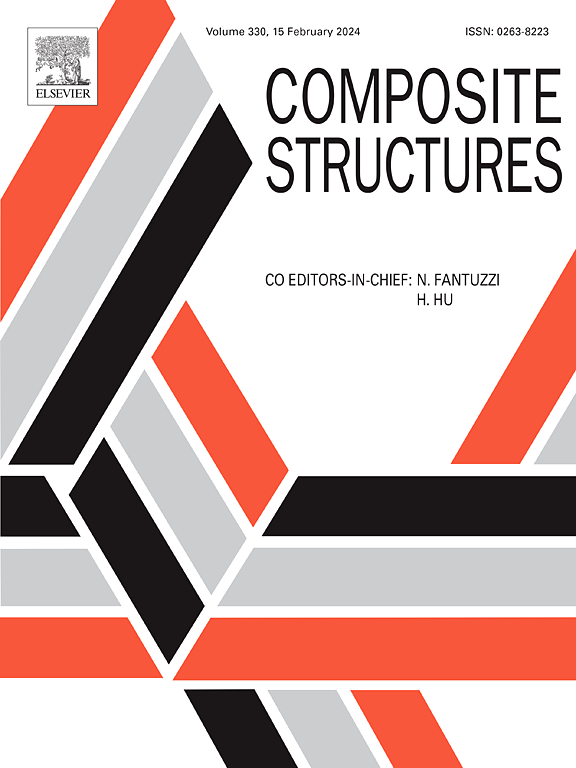A regional integral iFEM for deformation sensing of the large-scale composite panel under complex service conditions
IF 6.3
2区 材料科学
Q1 MATERIALS SCIENCE, COMPOSITES
引用次数: 0
Abstract
Accurate and robust deformation sensing is of great significance for large-scale composite panels that are widely used in aerospace. The inverse finite element method (iFEM) has been deemed as one of the promising techniques due to its full-field reconstruction capability. However, engineering large-scale composite panels usually suffer from complex service conditions such as non-uniform distributed loads and internal displacement constraints. Under such conditions, strain in inverse elements may distribute irregularly so that measured strain at the element’s center can no longer reflect the strain distribution over the entire element, leading to a reduction of deformation sensing accuracy. This paper proposes a regional integral iFEM to improve the deformation sensing accuracy under complex service conditions. The method incorporates a service dimension constrains-based element partition strategy to generate inverse elements so that strain in the local element region is as uniform as possible. Besides, a regional integral error function (RIEF) is developed for deformation reconstruction, using strain over the element for deformation sensing instead of the strain at the element’s center. This method is validated through simulation and experiment of a large-scale multilayer-heterogeneity composite panel, and the maximum error decreased by 44% for all laboratory test cases.
用于复杂使用条件下大型复合板变形传感的区域积分 iFEM
准确、鲁棒的变形传感对于广泛应用于航空航天领域的大型复合材料板具有重要意义。逆有限元法(iFEM)因其具有全场重构能力而被认为是一种很有前途的技术。然而,工程大型复合板往往面临非均布荷载和内部位移约束等复杂使用条件。在这种情况下,逆单元中的应变可能分布不规则,使单元中心处测量的应变不能反映整个单元的应变分布,从而降低变形传感精度。为了提高复杂使用条件下的变形传感精度,提出了一种区域积分有限元方法。该方法采用基于服务维度约束的单元划分策略生成逆单元,使局部单元区域的应变尽可能均匀。此外,提出了一种用于变形重建的区域积分误差函数(RIEF),利用单元上的应变来感知变形,而不是单元中心的应变。通过大型多层非均质复合材料面板的仿真和实验验证了该方法的有效性,所有实验室测试用例的最大误差降低了44%。
本文章由计算机程序翻译,如有差异,请以英文原文为准。
求助全文
约1分钟内获得全文
求助全文
来源期刊

Composite Structures
工程技术-材料科学:复合
CiteScore
12.00
自引率
12.70%
发文量
1246
审稿时长
78 days
期刊介绍:
The past few decades have seen outstanding advances in the use of composite materials in structural applications. There can be little doubt that, within engineering circles, composites have revolutionised traditional design concepts and made possible an unparalleled range of new and exciting possibilities as viable materials for construction. Composite Structures, an International Journal, disseminates knowledge between users, manufacturers, designers and researchers involved in structures or structural components manufactured using composite materials.
The journal publishes papers which contribute to knowledge in the use of composite materials in engineering structures. Papers deal with design, research and development studies, experimental investigations, theoretical analysis and fabrication techniques relevant to the application of composites in load-bearing components for assemblies, ranging from individual components such as plates and shells to complete composite structures.
 求助内容:
求助内容: 应助结果提醒方式:
应助结果提醒方式:


